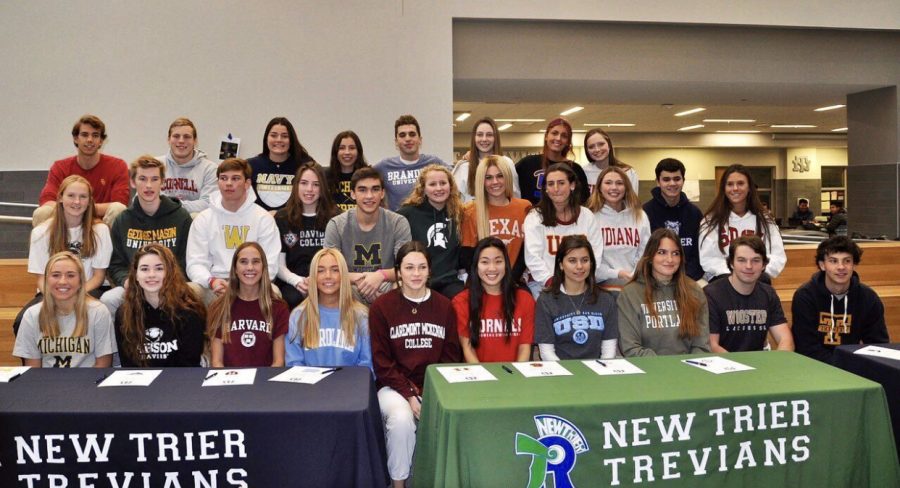COVID-19’s impact on athlete recruitment
New Trier athletes weigh in on the different ways COVID-19 has affected their recruitment.
The odds are already stacked against high school athletes to receive a sports scholarship to an NCAA school. Now with the COVID-19 pandemic cancelling and postponing the seasons for many athletes, it is becoming even more difficult to achieve their dreams and play in college.
In late March, the IHSA shut down all sports. At that point, winter sports were wrapping up, but spring sports never got a season. This means that colleges have less of a chance to evaluate players, and rely heavily on their highlights from previous seasons.
The selection process looks different for every sport, so naturally the shutdown impacted each sport differently. For instance, certain sports have club teams so athletes can play outside of New Trier. For these sports, most of the recruiting happens there. Senior Will Geis, who plays basketball on varsity and on an AAU team, said the pandemic has posed several challenges.
“I missed my whole AAU season so most college coaches couldn’t come and see me, and now only Division III schools can come,” said Geis. “However, I think they were also scared of catching the virus. It’s so much harder to evaluate someone off a TV screen than watching in person.”
This is one of the major pandemic-related drawbacks: coaches and scouts can’t watch people play in person. Even though many club sports have already resumed, coaches are hesitant to travel to watch athletes play due to health concerns.
Geis says that hurts his chances because because now, “Coaches are recruiting based on rankings, and I’m not a nationally ranked player.”
There is also an aspect to recruiting that goes beyond schools scouting athletes: Athletes also need to decide which college is the best fit for them and often that is done through tours and campus visits.
Senior Kate Carfagnini, who is being recruited to play hockey in college, said: “You can’t go visit schools on campus if they aren’t a driving distance and even some schools that are driving distance aren’t even open for tours.” Some athletes, however, haven’t been affected by the pandemic. While some recruitment has been affected, , others haven’t been affected by COVID-19.
Senior quarterback Tyler Hardin, for instance, recently announced his commitment to Middlebury College in Vermont. Hardin stated, “I’m very lucky that I was in a position to have a pretty solid junior [highlight] tape and the schools I was looking at to play football for really enjoyed it. My commitment to Middlebury has nothing to do with the fear of not having a season or any of that.”
Similarly to Hardin, senior Ian Burns’ commitment to the University of Michigan to play basketball was unaffected by COVID-19. However, the virus did cancel his last AAU season.
“This being my last year of AAU really devastated me, because I had to rely on my film from high school rather than playing in front of coaches in person. I don’t think COVID impacted the time I committed because I always wanted to commit before my senior year,” said Burns.
Juniors and sophomores are more fortunate than seniors because they have more remaining seasons to be recruited.
Junior Nevan Cremascoli, who also plays quarterback and has aspirations of playing college football, has been frustrated by the postponement of his season. Especially since juniors are first allowed to communicate with Division I schools in the fall, which is when the season was supposed to happen.
“While I am still able to talk to them about the future and what I am doing now to prepare for the season, on a normal year without COVID, I would’ve been giving them my schedule and talking to them in person. But now I’m only able to show them workout film and respond to their DM’s,” stated Cremascoli.
Major contact sports have had their seasons pushed back, but it remains unclear if other sports will happen at all this year. Cremascoli said, “This is a very strange time that no previous high school athletes have had to endure, so there are a lot of unknowns about what is to come for us as athletes.”







































